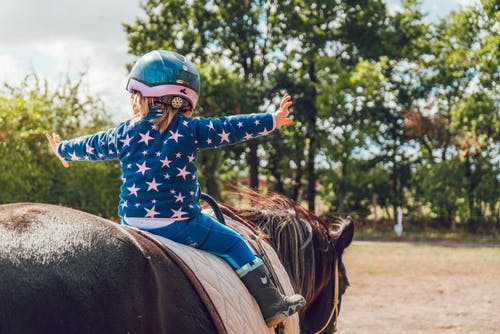A rider should understand why a well balanced horse is essential and where the center of balance is for a horse. The rider and horse should be in tune with each other’s bodies. This is part 1 to a series of a well balanced horse and balanced riding skills.
Special note
I wanted to start this post with the technical description of a “Balanced rider,” riding the “Center of Balance,” and the “Center of Gravity” of a horse. All terms can be different for individual riding disciplines. I reminded myself that this blog is for learning about horses for beginner riders or parents of those riders. In order for them to learn with simple words and simple explanations.
In this series. I pictured a beginner’s first lesson and did not want to overwhelm the new rider or their guardian who standing by the rail watching them learn. As a rider advances in their riding level, their abilities and skills allow them to understand the mechanics and technicalities of balance better. I will end this three-part series on balance with, horse riding exercises to improve balance.
A beginner rider needs to learn certain exercises that help them to develop balanced riding position
While teaching a person to ride a horse, the number one thing to work on is balanced riding and what a balanced horse is.
There are many horse riding positions that help a horse with its balance. A rider can benefit from knowing why balance is important and vital to the way a horse moves, feels and behaves.
With beginners, the balance must be obtained first to assure they can ride safely without assistance. This takes a little time. However, some riders excel quicker than others. There are many horse riding exercises to improve balance. No matter the age these exercises benefit a new rider. In part three of this series, I will end with many exercises for the beginner rider. Both children and adult riders can benefit from these exercises.
If you want to jump ahead follow the below link to my last post on this subject. https://newtohorses.com/beginner-riders-can-learn-to-be-balanced-riders-part-3of3/
A rider must learn to balance and avoid any discomfort or damage to the horse.
When a rider is in balance, they are more likely to be in control of their body and hands. They will be able to connect with the horse’s movement not interfere with it.
A rider with poor balance can create painful physical problems in a horse. When this happens a horse can lose confidence in a rider. This can cause a wide array of behaviors while a rider is mounted or not. That’s why balance should be something you learn and work on with every ride. We will touch on why it is important for horses and riders.
But, it’s not just the rider that can be out of balance. When a horse is already out of balance, a beginner or novice rider may not realize it. A horse’s imbalance can cause many issues to their comfort and connection with the horse.
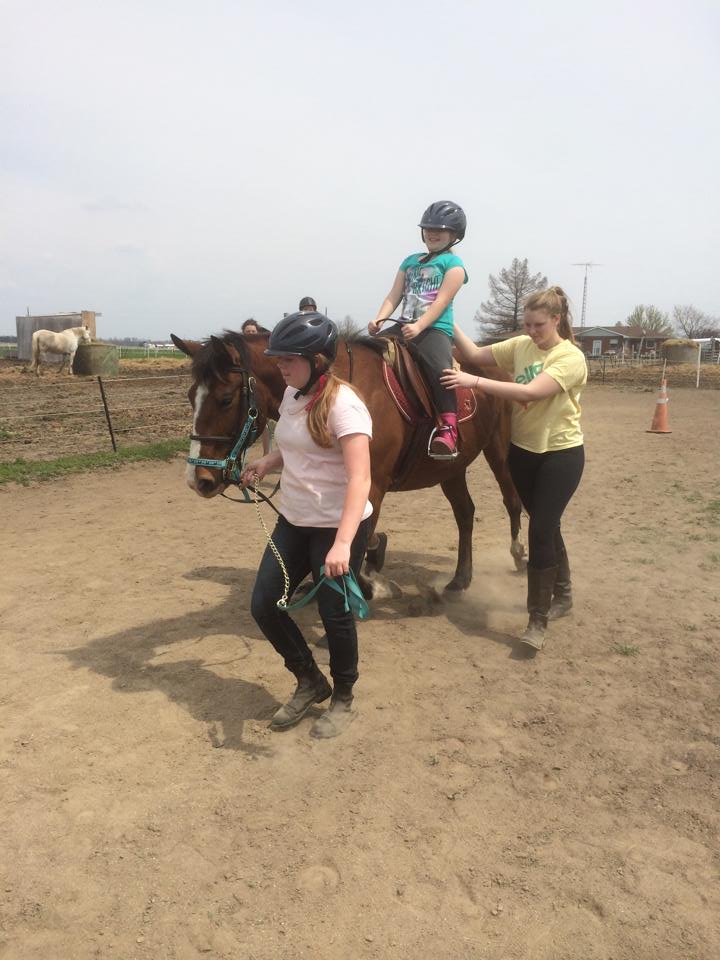
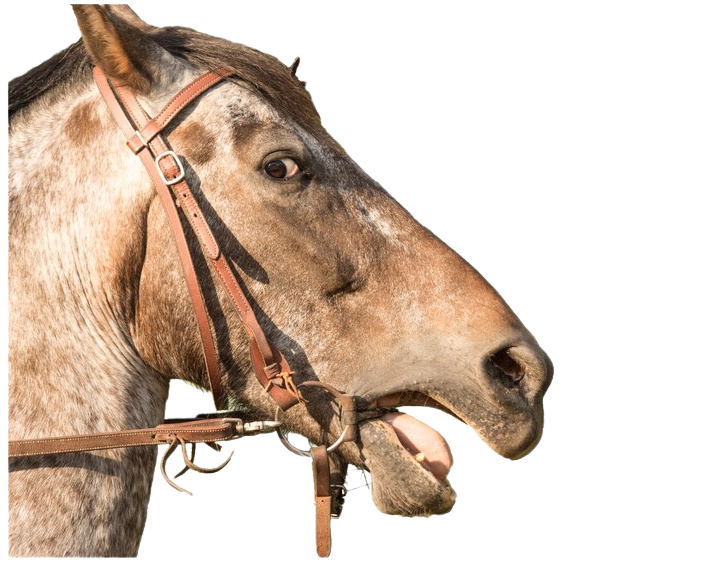
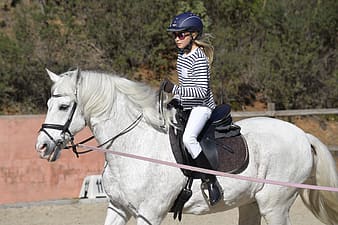
Rule#1: Don’t use the reins to help you balance
A horse’s mouth is a no-touch zone for beginners. My riders didn’t use reins in their first few lessons. The number one rule is that you NEVER jerk or pull harshly with your reins unnecessarily. Reins are connected to the bit in a horse’s mouth and must be used correctly. The reins and bit are simply tools that help us communicate kindly with a horse. NOT save an unbalanced the rider.
Most lesson horses understand the rare accidental jerk from a beginner. But the best way to “ruin” a horse is the improper use of the reins. A rider must avoid; pulling on its mouth at the wrong times, being overly heavy-handed by asking to turn or stop harshly, hanging onto its mouth with the reins, and pulling the reins to catch themselves when they lose balance. When using the horse’s mouth in these ways, a rider can cause damage emotionally and physically.
A rider must learn balanced riding so they can use a soft educated hand when telling the horse what you want it to do.
How a rider mounts can negatively affect a horse
My students only mounted with a mounting block. When mounting from the ground you run a risk of throwing the horse’s alignment out. This does not apply only for heavy riders. All size individuals mounting from the ground can affect a horse, by pulling the withers and, or the neck out of alignment. It may be subtle, but the horse may take a step, flinch or lean due to all the rider’s weight pulling from one side.
Similarly, carrying an unbalanced rider can create a misalignment in the horse’s back or other parts of the body.
Below is an example of a mounting block; they also can be built out of wood. My mounting block allowed two people to be on it at the same time. That way we could help new riders, by standing next to them, on the mounting block.
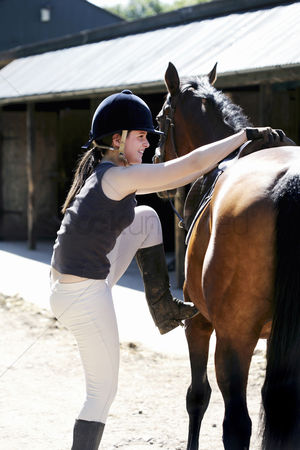
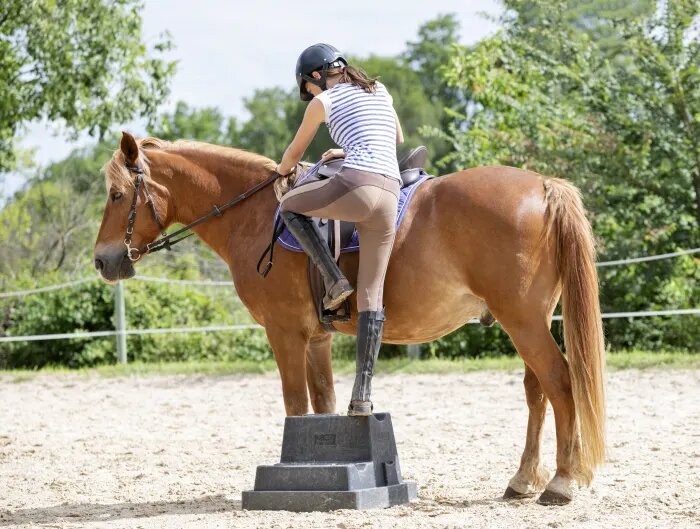
A beginner rider must learn to be observant and aware of physical or emotional changes in a horse
To the untrained eye, a horse may seem perfectly fine. But a trained eye can see minor movements a horse makes that show it is not itself.
Observing a horse’s movement and behavior will help a rider see when the horse is moving as they typically do or if something has changed. New riders should learn how horses are supposed to move and behave to watch for any appearance of discomfort. An excellent way to know this is to lunge a horse before riding. Lunging is a great way to warm a horse up and for the rider to see how the horse is feeling.


Horse professionals can assist in helping to keep a balanced horse balanced.
Just as a chiropractor helps people keep aligned in their joints and spine. They also can help a horse. I had a Chiropractor work on my horses every 6 -8 weeks. They were lesson horses and had a variety of riders. It was vital that they stayed in balance so that they would be pain-free and well-behaved.
Farriers can help keep a horse in balance too. They know the wear of a horse’s hoof. They trim according to the needs and conformation of each horse based on its discipline. Farriers have skills to help a horse’s hoof support their conformation faults, to help prevent long-term lameness issues.
Conformation plays a big role in the balance of a horse.
Conformation refers to the shape or structure of a horse, and it can impact a horse’s athletic ability.
Generally, a horse’s neck should be one and a half times the length of the head.
The neck should tie into the horse’s body fairly high to provide good chest space.
The shoulder and pastern angles should be between 40 and 55 degrees.
A horse can move best with a short back and long neck.
Correct legs structure can improve desired performance and reduce lameness.
https://extension.umn.edu/horse-care-and-management/conformation-horse
Balance is the “equal distribution of muscling and weight from the front of the horse to the back of the horse, from its top to its bottom and from side to side”. A horse’s center of balance is influenced by the proper angles and proportions of different parts of the body.
A well balanced horse is important for safety reasons
Each horse has a different conformation which causes them to hang heads low or high. Some horses’ gaits are faster and bumpier than others.
A horse’s movement can be affected by its environment as well as confirmation. It can move towards something suddenly, sporadically in different directions, stop suddenly, trip, and move its head up and down.
These are just a few reasons why learning to balance while riding a horse is vital to a rider’s safety in the saddle. The above movements can affect a rider’s balance, and if a rider is not well balanced, they can hit the ground pretty fast and hard.
While learning balanced riding skills for new riders, can help a rider physically as well as cognitively
Riding horses can be therapeutic for a person. One can see a difference physically and mentally while going about their everyday lives. With or without a therapist, riding can help the neurotypical rider with a wide array of issues. Balance is one of them.
Hippotherapy
The term hippotherapy refers to how occupational therapy, physical therapy and speech-language pathology professionals use evidence-based practice and clinical reasoning in the purposeful manipulation of equine movement as a therapy tool to engage sensory, neuromotor and cognitive systems to promote functional outcomes.
https://www.americanhippotherapyassociation.org/what-is-hippotherapy
Strength, Muscle Coordination and Sensory Processing used for walking, talking, and the use of fine motor skills for activities of daily living and general attention to tasks have all been shown to be positively impacted by equine movement as a facilitation tool/strategy, when under the direction of a therapist, as part of a larger total plan of care. In additional, increased motivation and participation in treatment and social emotionalbenefits have been reported.
https://www.americanhippotherapyassociation.org/what-is-hippotherapy
This is the first of a three-part series on Balance for Horse and Rider.
A big thanks for reading my posts.
If you ever have questions please ask on the form below. Or you can visit my Facebook page @newtohorses and ask questions or make comments.
Thank you for reading my blog. I appreciate you very much. Please share this post with others using the social media links at the top of this page.

